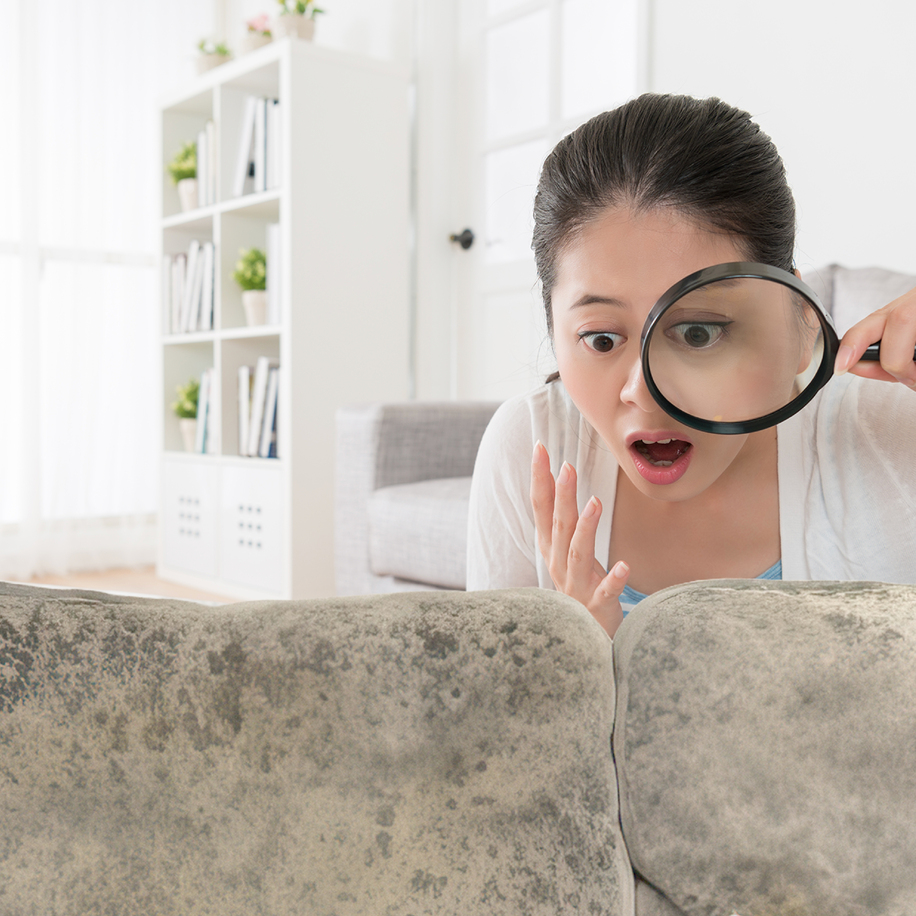Humidity Got You Down? Keep Your
Home Cool With These Tips and Tricks

Table of Contents:
- Humidity: The invisible water vapour in the air
- How humidity affects temperature and your health?
- Quick DIY methods to measure humidity levels at home
- 3 ways to control indoor humidity that works
- Ideal room temperature settings for your loved ones
- A balance indoor humidity level = A better living condition
- Keeping your indoor humidity balanced every day, the smarter way
If you’ve ever felt stuffiness in the air, lethargic and low in energy upon entering your house, there’s a big chance that humidity could be the culprit.
Whether you are working, relaxing or sleeping; maintaining a balanced humidity at home could boost your overall well-being. When you feel good, your energy and mood will improve significantly. When the humidity level is too high or too low, it will have an adverse effect on your health and daily productivity. However, when the humidity is just right, your comfort level will increase; letting you focus better while performing tasks or to enjoy a more relaxing downtime at home.
So, what is humidity and how can you achieve a good humidity balance indoors? In today’s post, we will discuss the correlation of humidity levels and your living comfort, and learn about ways to measure and control indoor humidity that works.

Humidity: The invisible water vapour in the air
Humidity is a natural part of our atmosphere. It is an integral part of the water cycle, as water is evaporated from bodies of water and removed by condensation. Humidity is defined as the amount of water vapour (moisture) present in the atmosphere. Weather reports normally describe humidity in terms of Relative Humidity (RH) which is a measurement of how much water vapor is in the air compared with how much vapor that air could hold at a given temperature and pressure.1
Usually when the air is warm, it holds more water vapour in the air, thereby increasing the level of humidity. Similarly, you will experience lower humidity levels in colder areas as colder air cannot handle as much moisture.
How humidity affects temperature and your health?
Humidity and temperature are somewhat related. Here’s a quick calculation on how humidity affects temperature using the Heat Index.2
For example, an air temperature of 30°C with a relative humidity of 80% would result in an estimated 38°C perceived temperature. Perceived temperature is subjective and can be influenced by several factors, including but not limited to pregnancy, hydration, body composition and metabolic rate.
Extreme humidity conditions can cause discomfort, sickness and even damage to your household items. Let’s take a look at the three most common effects of high and low humidity.
High humidity
- Stickiness
When the air has a high proportion of water vapour, sweat begins accumulating on our skin and is unable to evaporate, resulting in a sticky feeling. In turn, our body has to work harder to cool down and begins overheating, which decreases our overall mood, focus and productivity.
- Shortness of breath
As high humidity makes air feel thick and dense, it makes your body work harder to breathe, which makes you feel tired and short of breath even when you are merely performing light tasks.
- Sleep deprivation
A decrease in body temperature is a necessary part of getting a good night’s sleep. High humidity affects the body’s ability to regulate its temperature during sleep because of sweating from the heat, thus, making you feel tired and restless the next day.
- Allergies
When building materials or furnishings are damp over a period of time, mold and bacteria will often colonize these materials, producing microscopic airborne particles that can cause allergies. Dust mites thrive in high humidity areas as they absorb moisture from the air to survive. These allergens cling on to fabrics like bedding, mattresses, curtains, furniture and carpets, which may trigger allergic reactions.
Low humidity
- Skin Dryness
In low humidity environments, moisture is drawn out from the uppermost layers of our skin causing dryness, which may vary from mild roughness to flaking of skin and hair scalp. When your skin lacks moisture, you may experience itchiness and dryness on your skin, throat, eyes and nose. Besides that, dry skin also appears less supple and wrinkles, fine lines and dark spots are more visible, making you look older.
- Damage to household appliances
Have you experienced a small shock from touching door knobs? It is usually because of excess static electrical charge that accumulates in insulating materials where electricity does not circulate well. In a low humidity environment, there are not enough water molecules in the air that could spread out these electrostatic charges and the imbalanced charges will only even out their differences in charge by coming into contact with another conductor causing damage to household appliances.
- Flu
Research has shown that low humidity increases the spread of airborne viruses and travels further in environments with less moisture in the air. The other reason why cold and flu is easily spread in low humidity environments is because the dry air dries up the respiratory membranes of the mouth and nose, which is the first protection against infections, therefore allowing these viruses to easily enter the body.
- Health risk
Air that is too dry will cause dust mites, mold and bacteria to dry out and become airborne which could be inhaled causing unnecessary health risk.

Quick DIY methods to measure humidity levels at home
- The ice cube method
Place a few ice cubes in a glass and wait for a few minutes. If fewer water drops are formed on the outside of the glass, that means the air is dry (low humidity). If more water drops are formed and condensed rapidly on the outside of the glass, that means the air is wet (high humidity).
- Hygrometer
Analog Hygrometers use a moisture-sensitive material that is attached to a coil spring which controls a needle on a circular dial. It is affordable, durable and easy to use but they are not as accurate as digital devices and slow to reflect abrupt changes in humidity.
Digital Hygrometers determine humidity by using a sensor to monitor an electric current that is affected by moisture levels. They are more precise and may include additional information e.g. comfort ranges and daily highs and lows.
- Hygrometer apps for Android or iOS
You can also install hygrometer apps on your phone. Some need to be connected to a humidity sensor, and some newer or higher end smartphones are equipped with built-in sensors to work with the barometer and altimeter apps. Other apps will show you the humidity and temperature levels in that area which you are located.
3 ways to control indoor humidity that works
1. Dehumidifier
Dehumidifiers are one of the most common yet effective ways to control indoor humidity.
Dehumidifiers work by removing excessive water vapour in the air.
2. Ensure your house is ventilated
Ventilation is another effective way to disperse indoor humidity. Before you shower or cook, remember to open windows or turn on the extractor hood to allow the excess moisture to escape. Proper ventilation can improve air quality in your home.
3. Use an air conditioner
Air conditioning can cool your home and reduce humidity level. With the right temperature settings, it can maintain a comfortable indoor environment. Always clean the air filters regularly to unclog the accumulation of dust.

Ideal room temperature settings for your loved ones
The ideal relative humidity (RH) indoors based on three demographics of a typical household is recommended to be between 40-60%. The RH and AC temperature settings below are a generic guide and may vary based on individuality.
- Babies and toddlers
A good night’s sleep is crucial for the healthy development of babies and toddlers. Check your baby's temperature by touching your baby’s chest or abdomen for a more accurate reading. If your baby is sweating and hot to the touch, it could be due to heat and if your baby is shivering or having breathing difficulties, the room may be too cold.
RH settings:
The ideal indoor humidity level in a baby’s room should be between 30% - 50%.
Air conditioner temperature:
The ideal AC setting in a baby’s room should be between 20°C - 22°C.3
- Pregnant mums
Pregnant mums usually feel hotter due to the increase in blood volume and increase in metabolic rates, leaving you feeling overheated. Most pregnant mums have difficulty sleeping as they are not comfortable due to the various body changes that come with pregnancy, so it is important for pregnant mums to have a well-rested sleep.
RH settings:
For a mum going through pregnancy, the relative humidity should be around 45%.
Air conditioner temperature:
The ideal AC setting should be between 26°C - 28°C.4
- Elderlies
With the elderly, normally rooms are pretty warm. That is because when someone gets older, the elasticity of the blood vessel walls reduces making it more difficult for the heart to pump an adequate amount of blood to the skin resulting in the fat layer under the skin becoming thinner, preventing it from preserving heat like it used to. According to research5, it only takes 45 mins for a chilly room temperature to have a significant impact on the elderly.
RH settings:
For elderly relaxing indoors, the relative humidity should be less than or equal to 55%.
Air conditioner temperature:
The ideal AC setting should be around 25°C.6
A balance indoor humidity level = A better living condition
Maintaining a balanced indoor humidity level is important for you to attain better living conditions. Investing in a good air conditioner with an air purifying system is one of the best ways to not only improve your indoor air quality but also prevent the growth of allergens that can impact your health and household products.

Keeping your indoor humidity balanced every day, the smarter way
Panasonic air conditioners are equipped with Humidity Sensors + iAUTO-X functions that can automatically create ideal humidity levels in every room for a restful sleep. Besides that, a Panasonic air conditioner with Humidity Sensor and iAUTO-X function constantly monitors and adjusts relative humidity levels to below 60% for an optimal sleeping environment, so you can stay comfortable indoors and enjoy better sleep with comfortable cooling.
Panasonic nanoe™ X
Panasonic nanoe™ X infuses the air with huge quantities of nano-sized hydroxyl radicals contained in water to inhibit various pollutants like bacteria & viruses, moulds, allergens, pollens, PM2.5 and penetrate deep into fabrics for effective deodorization.
Learn more about nanoe™ X technology here.
Article Links
1 https://www.weather.gov/lmk/humidity
2 https://www.calculator.net/heat-index-calculator.html
3 https://www.weatherstationadvisor.com/ideal-humidity-for-baby/
4 https://www.motherread.net/encyclopedias/pregnancy/precautions-during-pregnancy/matters-needing-attention-in-pregnant-womens-daily-life/can-pregnant-women-blow-air-conditioners
5 https://academic.oup.com/ageing/article/43/4/571/2812220?login=true
6 https://www.lssliving.org/news/resources/what-temperature-is-dangerous-for-elderly/
Related Products











